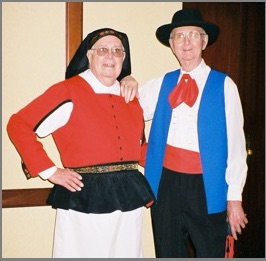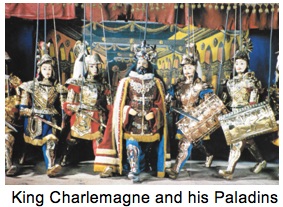— by Anne Robichaud – An Umbrian tour guide in Italy most of the year, Anne also teaches Umbrian rural cuisine in private homes in the U.S. in February and March (see www.annesitaly.com/united-states-events/u-s-cooking-classes)… and lectures.
San Martino, Umbria – Rural people baptized it l’albero del pane (“the bread tree”) for this tree grew on the mountains where wheat would not grow (and if elevation was also too high for olive trees, walnuts gave oil). The chestnut has starred in the culinary history of many civilizations and nowadays, highlights many a central Italy food festival.
 To discover the apex of chestnut culinary creativity, don’t miss the mid-November Festa del Vino e delle Castagne (Wine and Chestnuts Festival) of San Martino in Colle, a minuscule castle-village near Perugia.
To discover the apex of chestnut culinary creativity, don’t miss the mid-November Festa del Vino e delle Castagne (Wine and Chestnuts Festival) of San Martino in Colle, a minuscule castle-village near Perugia.
As you enter the village through the medieval arch, you’ll see red-cheeked Signor Agostino roasting chestnuts over an open fire. At a stand nearby, a volunteer sells il vino novello (new wine, i.e. of this year’s harvest). Chestnuts and wine are inextricably linked in central Italy’s rural culture. A much-loved saying, “San Martino, San Martino, castagne e vino” (“San Martino, San Martino, chestnuts and wine”) comes to life here in Umbria on November 11th, the feast of St. Martin, when rural families gather to inaugurate their new wine with roasted chestnuts.



 and crest. Knights are well-equipped: from the helmet on the head, and iron breastplate, the sword in the right hand … the shield on the left arm. Only the King, the Ladies, and the Pages are without armor.
and crest. Knights are well-equipped: from the helmet on the head, and iron breastplate, the sword in the right hand … the shield on the left arm. Only the King, the Ladies, and the Pages are without armor.
 history and production of bomboniere and then used a variety of materials to create bomboniere of their own.
history and production of bomboniere and then used a variety of materials to create bomboniere of their own.
 Italy, and other items of cultural or folkloric interest. Once you receive our posts regularly, please interact with us! Please visit frequently and boost the ratings by liking and commenting often on the posts.
Italy, and other items of cultural or folkloric interest. Once you receive our posts regularly, please interact with us! Please visit frequently and boost the ratings by liking and commenting often on the posts.